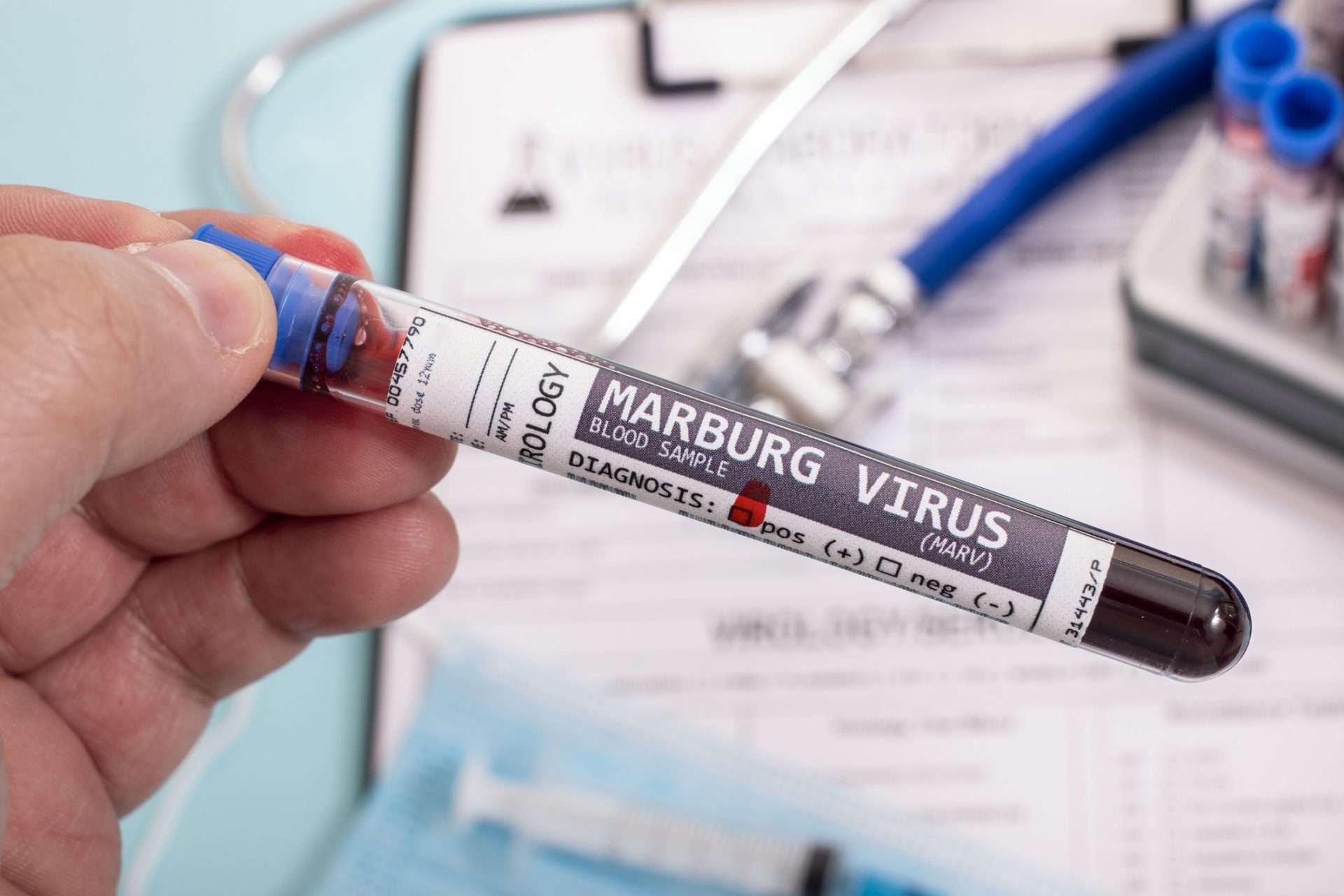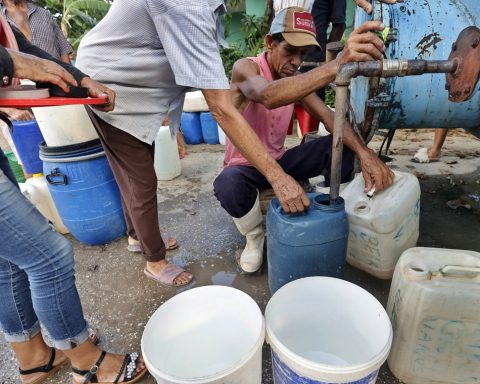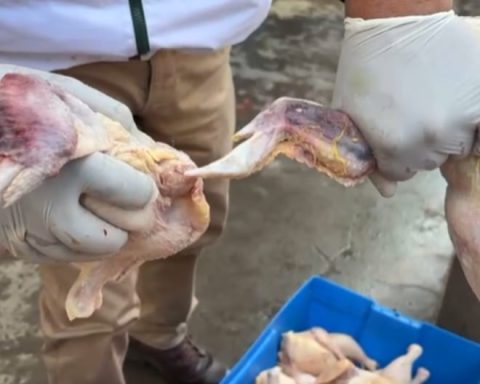The Government of Equatorial Guinea decreed a state of health alert on Monday, February 13. It is an outbreak of the disease caused by the Marburg virus. The pathogen has caused the death of nine people in the province of Kie Ntem, on the mainland of the African country, near the border with Cameroon, according to a statement the Minister of Health, Mitoha Ondo’o Akeyaba.
In addition to the deaths, sixteen people who were in contact with the deceased are isolated in various hospitals, to prevent the spread of the outbreak. The Government has decreed that 4,325 people remain in quarantine at their homes in the Kie Ntem district.
From an outbreak to a crisis committee
The outbreak was detected at the beginning of February in the district of Nsok Nsomo, in the province of Kie Ntem. On February 7, the regional authorities reported the situation to the central government, which set up a crisis committee. The committee includes experts from the World Health Organization (WHO) present in Equatorial Guinea.
This group prepared a first contingency and immediate response plan, which determined the limitation of movement to and from the Nsok Nsomo district, affected by the outbreak. After several samples were taken from suspected patients and sent to reference laboratories on the continent, the presence of the virus was confirmed.
The WHO director for Africa, Dr. Matshidiso Moeti, said in a statement on Twitter that the virus is “highly infectious.” “Thanks to the quick and decisive action by the Equatorial Guinean authorities in confirming the disease, the emergency response can be rapidly accelerated so that we can save lives and stop the virus as soon as possible,” she said.
In addition to the nine deceased and the sixteen direct contacts admitted to hospitals —of which only two have mild symptoms—, the Government keeps twenty-one people isolated in their homes for having been “second-order contacts” (contacts of contacts) of the deceased.
WHO response
The organization has announced dispatching experts to help control the outbreak. He also supplied laboratory gloves and personal protective equipment for some 500 health workers in Equatorial Guinea. The health alert includes both the province of Kie Ntem and the district of Mongomo, in the neighboring province of Wele Nzas.
In a brief statement, the WHO indicated that would summon to “an emergency meeting” of the Marvac consortium, which promotes international collaboration for the development of vaccines against the Marburg virus.
The consortium, coordinated by the WHO, includes representatives of the pharmaceutical industry, non-profit organizations, authorities and academics. Its members would take stock of the epidemiological situation in Equatorial Guinea, as well as the possible treatments and vaccines available, the WHO indicated.
What is Marburg fever?
The disease for the Marburg virus (MVS), formerly called Marburg Hemorrhagic Fever, is severe and often fatal. The average fatality rate of the disease oscillates around 50%; that is, half of the confirmed patients die. However, during the last shoots It has reached up to 88% lethality, depending on the strain and the treatment of the cases.
The causative agent of this rare disease is the Marburg virus. It has many similarities with that of Ebola; both belong to the family Filoviridae. Hence, the diseases they cause have many clinical manifestations in common, especially high mortality rates.
The disease has been known since 1967, when two outbreaks occurred simultaneously in Marburg and Frankfurt (Germany) and in Belgrade (Serbia). Subsequently, outbreaks and sporadic cases have been reported in Angola, Kenya, the Democratic Republic of the Congo, South Africa (one person who had recently traveled to Zimbabwe) and Uganda.
In 2008, two separate cases were reported in travelers who had visited a cave inhabited by colonies of bats. Rousettus in Uganda. the last bud it was decreed in July 2022 in Ghana, after the disease killed two people.
How is it transmitted?
As with many viral diseases, the natural reservoir is bat colonies. Rousettus or fruit bat. Infection in humans is due to prolonged stay in mines or caves inhabited by these mammals.
Transmission between people occurs by direct contact of broken skin or mucous membranes with blood, secretions, organs or other body fluids of infected people. In addition, surfaces and materials contaminated with said liquids, such as personal clothing or bedding, may become infective.
Transmission through contaminated injection materials or needle sticks is associated with increased disease severity. In these cases, a more rapid aggravation of symptoms is observed and, possibly, a higher case fatality rate. Transmission can also occur at funeral ceremonies in which mourners have direct contact with the body of the deceased.
The possibility of an infection occurring is latent as long as the virus is in the blood of the infected person.
What are the symptoms of the disease?
The interval between infection and the onset of symptoms for the disease ranges from two to twenty-one days. They appear abruptly and are characterized by the presence of high fever, intense headache and malaise, as well as frequent muscle pain.
On the third day, intense watery diarrhea, abdominal pain and cramps, nausea and vomiting may appear. This can persist for a week. Patients in this phase often have a “ghost appearance” due to sunken eyes, facial expressionlessness, and extreme lethargy.
In the 1967 European outbreak, most patients developed a dengue-like rash two to seven days after symptom onset. Many patients have severe bleeding manifestations within 5 to 7 days, and fatal cases usually present with some form of bleeding, often in multiple organs.
The presence of fresh blood in the vomit and stool is often accompanied by bleeding from the nose, gums, and vagina. During this phase of the disease (the most severe) patients have a high and persistent fever. This can be accompanied by confusion, irritability, and aggressiveness.
Occasional cases of orchitis have also been described; that is, inflammation of one or both testicles, of late appearance. Finally, in fatal cases, death usually occurs on the eighth or ninth day after the onset of symptoms. It is often preceded by heavy blood loss and shock (a medical term for the inability of the circulatory system, which includes the heart and blood vessels, to deliver oxygen to the cells of the body).
How is MVD diagnosed and what is the treatment?
Clinically, it can be difficult to distinguish MVD from other infectious diseases such as malaria, typhoid fever, shigellosis, meningitis, and other viral hemorrhagic fevers. Different laboratory methods are used to confirm that the cause of the patient’s symptoms is the Marburg virus. In these cases, handling samples and carrying out the tests implies a very high risk of contamination and must be carried out under maximum security conditions.
Until now, no treatments or vaccines have been authorized to combat MVD. However, supportive therapy through oral or intravenous fluid administration and treatment of certain symptoms improves the chances of survival.
In addition, monoclonal antibodies under development and certain antivirals used in clinical trials to treat Ebola, such as Remdesivir and Favipiravir. But these have not proven effective.
Race to develop vaccines
There are several vaccine candidates in development. In particular, a vaccine being developed in the United States. In Phase I it was shown to be safe and induced an immune response in a small clinical trial conducted for the first time in humans.
the researchers call “cAd3-Marburg” to the vaccine candidate, which appeared to induce strong and long-lasting immunity against a protein of the virus. In fact, 95% of trial participants showed a robust antibody response after vaccination, and the 70% maintained that response for more than 48 weeks.
At the moment, while waiting for the vaccine, the world is on alert, once again.
















